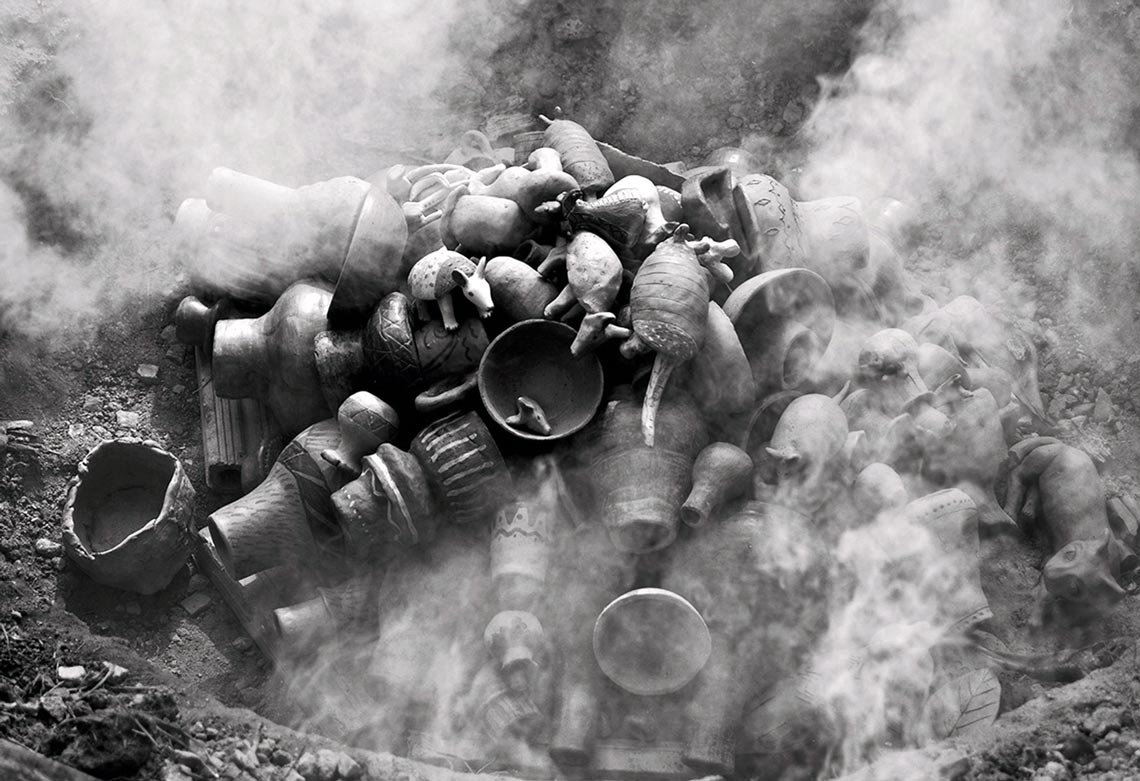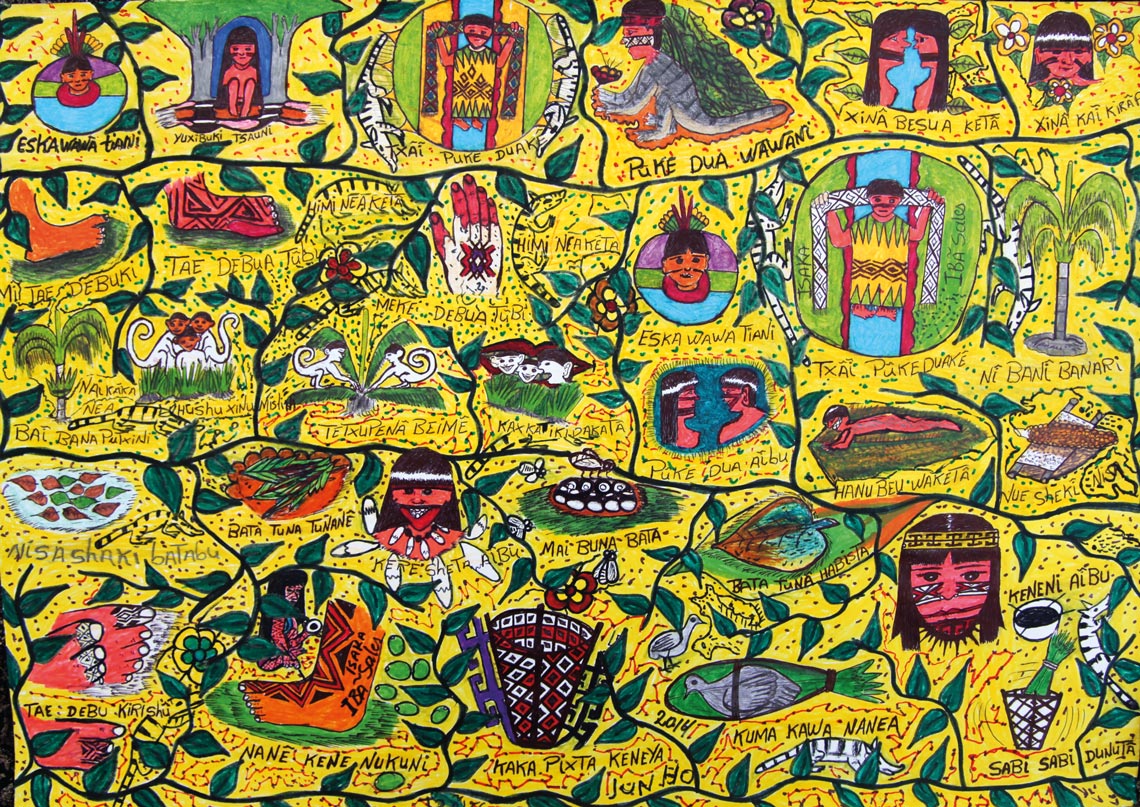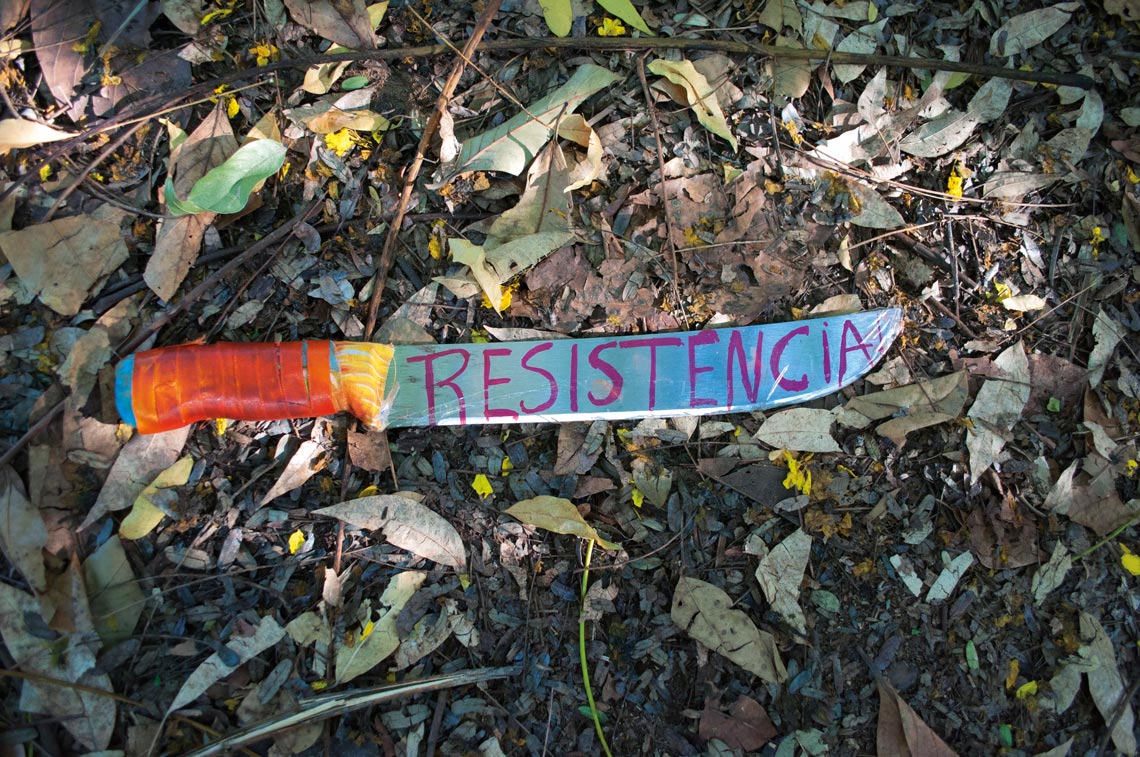In the late 1980s, over 170 years after Brazil’s first higher education institution was established, the first indigenous people were admitted into undergraduate programs at Brazilian universities. Their presence has become more pronounced this century, when the first PhD theses were defended. Today, it is a rising phenomenon, characterized by the development of research that allows for new issues to be raised in various fields of knowledge, from ethnographic studies to education, agroecology, and sustainability.
According to the Brazilian Institute of Geography and Statistics (IBGE), there are about 900,000 Brazilian indigenous people from 300 ethnic groups, who speak 170 languages. Carlos José Ferreira dos Santos, or Casé Angatu, a professor at the State University of Santa Cruz (UESC) and the Federal University of South Bahia (UFSB), both in Bahia, explains that entry into higher education became possible for indigenous people thanks to the restructuring of the indigenous movement in the 1970s, when it began to express itself politically. In 1988, with the promulgation of the Federal Constitution, the rights of indigenous populations were recognized in terms of preserving the areas they traditionally inhabited, their ways of life, their traditions, and their languages. Demarcation of their lands also became the responsibility of the State.
Gersem dos Santos Luciano, from the Department of Indigenous Education of the Federal University of Amazonas (UFAM), is part of the pioneer indigenous generation to gain entry into higher education. Luciano—one of the Baniwa people of São Gabriel da Cachoeira, Amazonas—graduated in philosophy at UFAM in 1995. In 2006, he acquired his master’s degree in social anthropology, with a dissertation on sustainable development, at the University of Brasília (UnB)—an institution where, five years later, he also completed his PhD in school education. “The first generation of indigenous researchers to gain entry into universities grew up hearing that their people would cease to exist. And that motivated us to develop studies about our own cultures, traditions, and knowledge, as a way to reaffirm our identity,” he explains.

Edgar Corrêa Kanaykõ Ethnography
Once ready, the pieces produced in a course about traditional knowledge at the Federal University of Minas Gerais are burned, according to the Xakriabá traditionEdgar Corrêa Kanaykõ EthnographyLuciano shares that he believes the arrival of the first indigenous people in graduate school led to an unusual situation. “White anthropologists have spent centuries making claims about our ways of life—and suddenly they come across us in the universities. For us, it was an opportunity to challenge certain views on our traditions, during a time that was characterized by an estrangement from both sides,” he recalls. Once this first phase was overcome, Luciano sees that the relationship became collaborative, and research teams today often rely on both indigenous and nonindigenous researchers. “Before, all PhD holders used to be white. Nowadays, there are several indigenous PhD holders, which allows for the quality of dialogue to change.” He believes this change already impacts the scientific production of many areas, such as anthropology and history. “We also started defining which research topics were priorities for us.”
The entry of indigenous people into the university system was also a result of the dissemination of postcolonial studies, which allowed for a break from the idea of a single historical narrative and led to an appreciation for the knowledge of native inhabitants. Carlos José Ferreira dos Santos, from UESC, explains that anthropologists, such as Darcy Ribeiro (1922–1997), Manoela Carneiro da Cunha, from the University of São Paulo (USP), João Pacheco de Oliveira, from the Federal University of Rio de Janeiro (UFRJ), and Eduardo Viveiros de Castro (National Museum-UFRJ) helped bring postcolonial thinking to Brazil, such as the works of Jamaican sociologist Stuart Hall (1932–2014) and Indian-English critic Homi K. Bhabha, making room for indigenous people to become the creators—not just the subject—of scientific research.
A resident of the Tupinambá Olivença territory—in the Taba Gwarini Atã village, in Ilhéus, Bahia—Santos obtained his degree in history from São Paulo State University (UNESP) in 1989. In that same year, he gained entry into a master’s program at the Pontifical Catholic University of São Paulo (PUC-SP); his dissertation, completed in 1995, was published as a book and titled Nem tudo era italiano – São Paulo e pobreza (1890–1915) (Not everything was Italian – São Paulo and poverty [1890–1915]) (Annablume, 1998). “In it, I try to portray the city from the perspective of indigenous people, caboclos [people of European and indigenous descent] and caipiras [rural inhabitants],” he says. In his PhD research, defended 15 years ago at the School of Architecture and Urbanism (FAU) at USP, Santos mapped the indigenous population from two communities in Guarulhos, São Paulo.

Ibã Huni Kuin / MAHKU / UFAC
Created by an indigenous collective at the Federal University of Acre, the piece portrays rituals involving ayahuascaIbã Huni Kuin / MAHKU / UFACPublished in 2016 in the French magazine Brésil(s) – Sciences humaines et sociales, the article “Ethnologie brésilienne. Les voies d’une anthropologie indigène,” written, with other researchers, by Dominique Tilkin Gallois, from the Department of Anthropology at USP, proposes concepts such as “anthropological ecumenism,” “trans-epistemic anthropology,” or “autoethnography” to describe indigenous research in anthropology—one of the pioneering fields to welcome these scholars. It is argued in the text that, through these concepts, such authors can establish unusual dialogues between traditional knowledge and the knowledge acquired in the universities.
Considered by Viveiros de Castro as the “first systemic attempt at symmetrical anthropology or counter-anthropology,” one book that illustrates these new possibilities of knowledge production is A queda do céu (The Falling Sky) (Companhia das Letras, 2015), written by Yanomami shaman and leader Davi Kopenawa and French anthropologist Bruce Albert. Originally published in 2010 in the French collection Terre Humaine, the work portrays Yanomami society, history, and culture from accounts made by Kopenawa to Albert over a period of more than 30 years.
The compilation of mythical and cosmological stories is a trend in recent research conducted by indigenous people. Another example of this movement is the work of anthropologist Gabriel Sodré Maia, from the Tukano people of the upper Rio Negro—in an Amazon region where about 20 indigenous groups coexist. Developed at UFAM, his dissertation explains a set of rituals and ceremonies that are part of his people’s culture, thus systematizing a kind of knowledge hitherto transmitted only orally. In his PhD research, currently underway at the same institution, Maia is studying how fruit is picked, prepared, processed, preserved, and eaten by the Tukano people.
Developing research on their own tradition allows native peoples to reaffirm their identity
The effort of highlighting indigenous knowledge in the academic universe also permeates the trajectory of biologist Raquel Sousa Chaves, of the Tupinambá people, of the Lower Tapajós, in the state of Pará. When obtaining her master’s degree in biological sciences at the National Institute of Amazon Research (INPA), she drew on her experience with the management of manioc—the main crop cultivated by the groups that live in the Lower Tapajós region—to analyze how soil characteristics influence cultivation. In her research, Chaves studied fields in riverside communities, different types of soil, and how much of the food produced was to be sold or eaten by the community. “Local manioc farmers who prioritize selling their crops work with a smaller number of varieties, leading to the loss of genetic diversity. Those who prioritize subsistence help maintain agrodiversity, as they invest in multiple varieties,” explains Chaves, who is in the process of obtaining her PhD in anthropology at UnB.
After obtaining her master’s degree, Chaves and her sister, Mariane Sousa Chaves, who has a master’s degree in agroecology, turned to a local association to organize their community’s agricultural production. Since 2018, the group has been producing and selling two new products: a fermented beverage called mani-oara and a spice called manibé, both made from manioc. “With the systematized knowledge acquired in graduate school, we were able to sell products traditionally made in our community,” she shares.

Davi Kopenawa and Bruce Albert / A Queda Do Céu / Companhia Das Letras
Drawing by Davi Kopenawa is featured in the book he coauthored with a French anthropologistDavi Kopenawa and Bruce Albert / A Queda Do Céu / Companhia Das LetrasBasic education
In addition to studies related to original cultures and traditions, another field of activity for these researchers is school education. Between 1997 and 1999, shortly after obtaining his undergraduate degree, Luciano, from UFAM, became Secretary of Education of São Gabriel da Cachoeira—a municipality whose population is 80% indigenous, including ethnic groups such as Baniwa, Karapanã, Kuripako, Tukano, and Tuyuka. “Until the mid-1980s, schools in the region forbade some indigenous students from speaking their languages and practicing traditional customs. When I was secretary, we changed the legal framework so that the institutions started to include this type of knowledge in the curriculum,” says Luciano. He was also coordinator of indigenous education at the Brazilian Ministry of Education (MEC) between 2008 and 2012.
The inclusion of traditional knowledge in schools was also a result of the doctoral research of Eliane Boroponepa Monzilar, which she defended this year. Monzilar—who graduated in social sciences in 2005 from Mato Grosso State University (UNEMAT)—has developed a thesis with autobiographical chapters, in which she describes the process of her own schooling, from elementary to graduate school. She then analyzes the development of indigenous school education in Brazil and traces an ethnographic and historical panorama of the Balatiponé-Umutina people, who live in Mato Grosso. Monzilar recalls that, in 1945, ethnographer and photographer Harald Schultz (1909–1966), from Rio Grande do Sul, in his book Vinte e três índios resistem à civilização (Twenty-three Indians resist civilization) (Melhoramentos, 1953), estimated the Balatiponé-Umutina population to be at just over 20 people. His report led anthropologists and sociologists to predict the extinction of this people and their culture. “In the 1990s, when the first indigenous people became teachers of basic education and began to include traditional knowledge in the school curriculum, our traditions came back to life,” she states.

Sallisa Rosa / Série Facões (Machetes Series), 2018 – In Progress / Offset Printing on Paper, 30 X 42 cm / Courtesy of the Artist
This piece by Sallisa Rosa, an artist of indigenous origin born in Goiânia, Goiás State, features a machete as a symbol of resistance and survivalSallisa Rosa / Série Facões (Machetes Series), 2018 – In Progress / Offset Printing on Paper, 30 X 42 cm / Courtesy of the ArtistThe educator notes that there are 600 people in the Balatiponé-Umutina village today, mostly children and young people, including not only the aforementioned group, but also individuals from the Paresi, Nambikwara, Bororo, Bakairi, Irantxe, Kayabi, Terena, and Chiquitano peoples. Monzilar—whose PhD research included time spent in institutions in Suriname and Colombia, with support from the Brazilian Federal Agency for Support and Evaluation of Graduate Education (CAPES) and the Foundation for Research Support of the State of Mato Grosso (FAPEMAT)—is a teacher in the village’s school of indigenous education, which is attended by 120 students from elementary to high school. “We use the reality of farm work to teach mathematics, for example. And when visiting sacred places in the forest, we study the trees that make up the ecosystem of the region.”
By establishing dialogues between traditional and academic knowledge, indigenous researchers have broadened the scope of thinking on subjects that are historically investigated in universities. Such is the case with Francisco Apurinã, whose undergraduate degree is in business and who lives on the indigenous territory of Camicuã, located between the states of Amazonas and Acre. In the dissertation for his master’s degree in sustainability, at UnB, Apurinã analyzed the impacts of environmental licensing on the construction of two highways that cut through indigenous lands in Acre, as well as on the traditional customs of native populations. In his doctoral research, completed at the same institution, he again studied the impacts of environmental licensing, but from ethnographic and spiritual perspectives. “Highway BR-317 cuts through the lands of the Apurinã people, and I analyze the consequences of this venture for the sacred places,” he explains.
Dedicated to researching the impacts of large undertakings on the health of indigenous communities, nurse Rayanne Cristine Máximo França, a master’s student in the Development, Society and International Cooperation program and a researcher at the Laboratory for Labor and Indigenous Health at UnB, works with a broader concept of health, which includes the idea of “environmental injustice.” “This concept came up about 15 years ago and considers the vital relationship of indigenous people with the land on which they live,” explains França, who is part of the Baré ethnic group, from Amazonas. She intends to analyze cases of environmental injustice—as does a yet unpublished study by the Oswaldo Cruz Foundation (FIOCRUZ), according to which 56% of the Yanomami population has mercury contamination above the limit considered reasonable by the World Health Organization (WHO). Such contamination may be related to the increase in illegal mining in the region: mercury is used in the gold extraction process. “I want to study how environmental problems affect the health of indigenous peoples,” she declares.
Countries like Canada and Australia are also discussing the best way to integrate traditional knowledge with academic studies in areas such as medicine and environmental preservation, reported Times Higher Education last June. In Colombia, the Universidad de Antioquia has a training program for indigenous teachers called Pedagogía de la Madre Tierra (Pedagogy of Mother Earth), whose subjects include ancestral knowledge and practices, legal issues relating to health, and intercultural perspectives.
When it comes to Brazil, Luciano, from UFAM, believes that over the last 20 years the research on native populations that has been developed around their own universes has contributed not only to the recovery of identities and appreciation of traditional knowledge, but also to expand the possible topics for academic investigations. On the other hand, as a member of the Baniwa people, he feels it is imperative that native communities improve their understanding of the western universe—including for strategy development in politically adverse situations. “In the near future, our research should involve efforts to broaden knowledge in this other context,” he finishes.
Scientific article
CHAVES, R. S. The influence of soil quality and market orientation on manioc (Manihot esculenta) varietal choice by smallholder farmers along the lower Tapajós River, Pará, Brazil. Human Ecology. Vol. 46, no. 2, p. 229–39. Apr. 2018.
Books
MAIA, G. S. Bahsamori. O tempo, as estações e as etiquetas sociais dos Ye’pamahsã. Manaus: Federal University of Amazonas (UFAM) and Foundation for Research Support of the State of Amazonas (FAPEAM), 2019, 348 pages.
KOPENAWA, D. and ALBERT, B. A queda do céu. São Paulo: Companhia das Letras, 2015, 769 pages.


